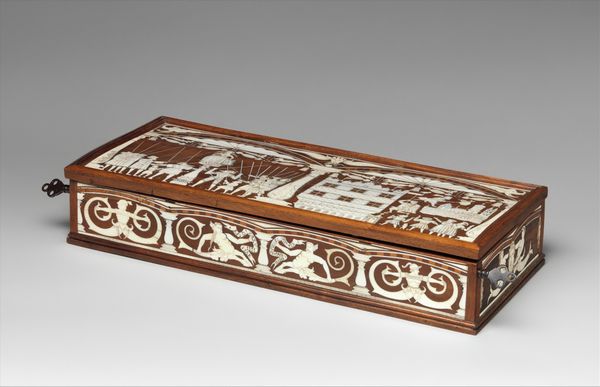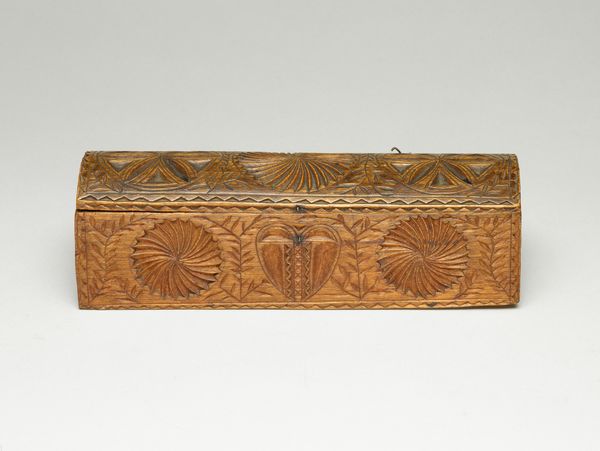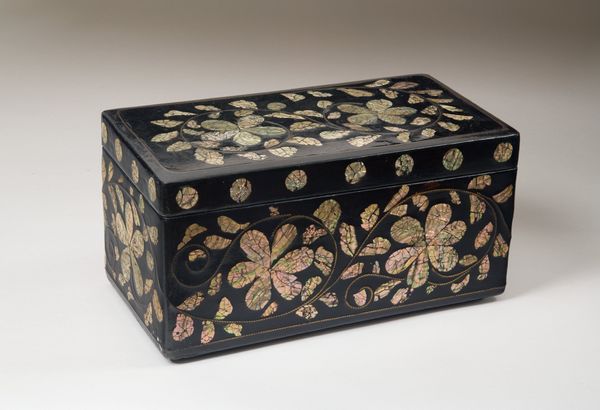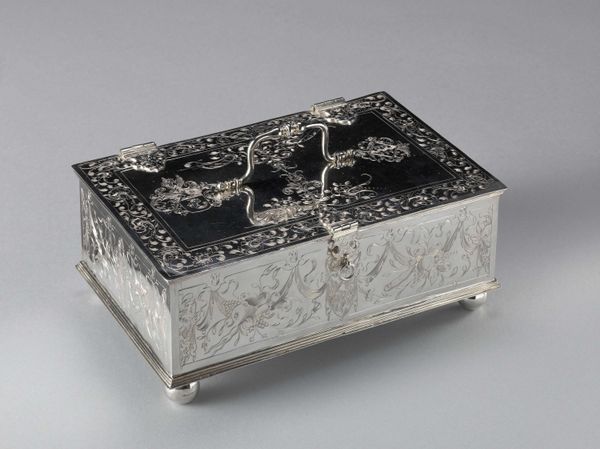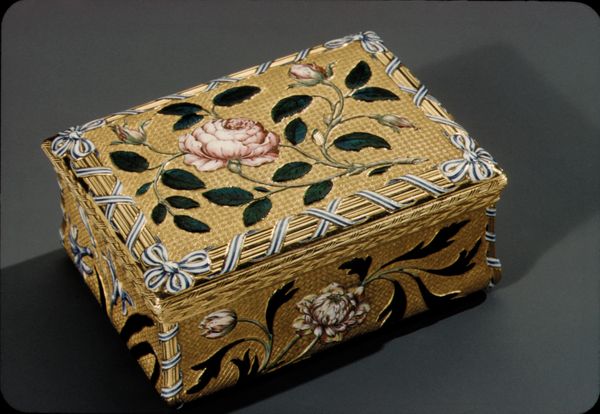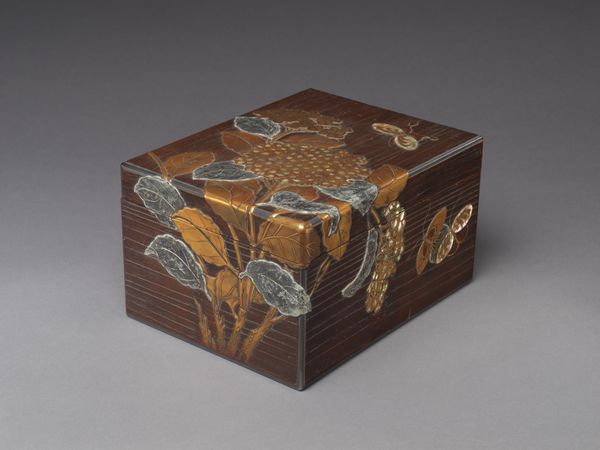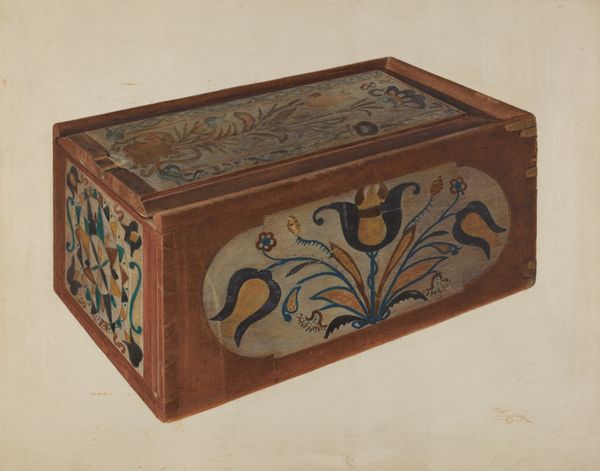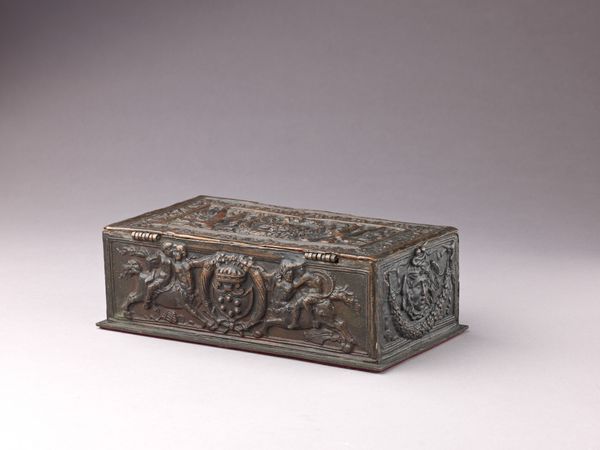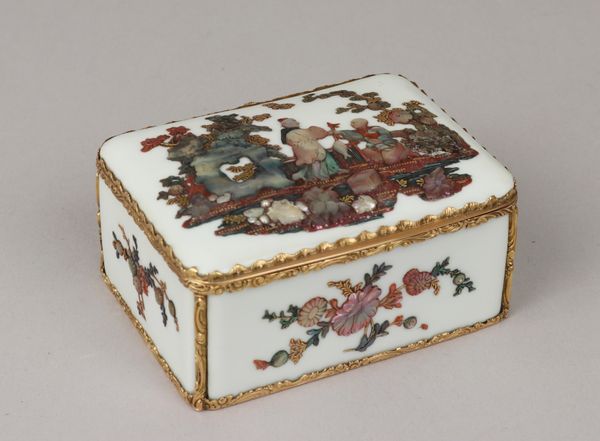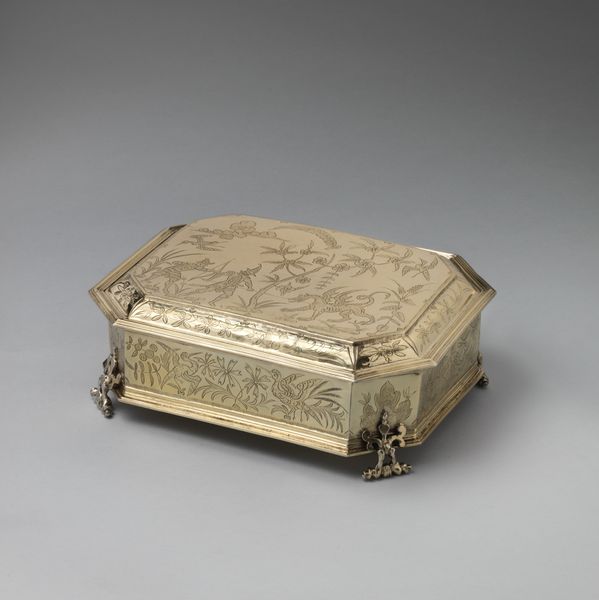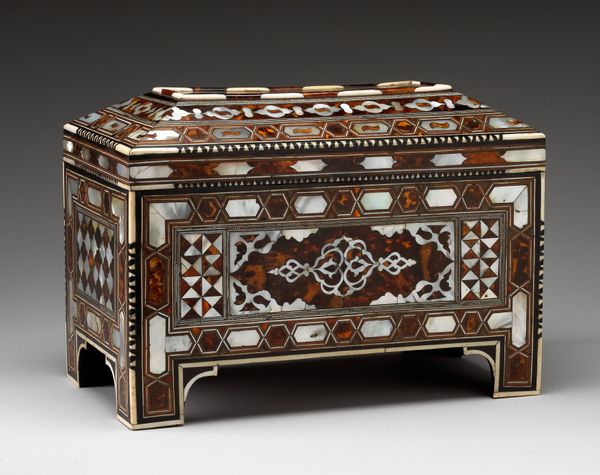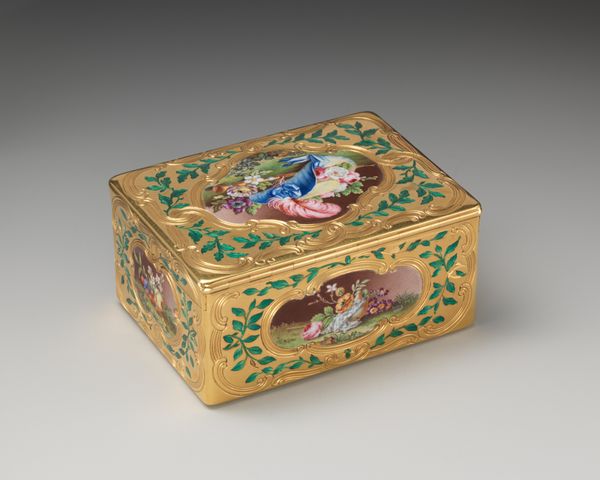
ceramic, earthenware
#
medieval
#
asian-art
#
landscape
#
ceramic
#
figuration
#
earthenware
#
stoneware
#
ceramic
#
china
#
decorative-art
Dimensions: 6 1/8 x 16 1/4 x 6 3/4 in. (15.56 x 41.28 x 17.15 cm)
Copyright: Public Domain
Editor: Here we have an earthenware pillow, dating from the late 13th to early 14th century, crafted by the Wang Family Workshop. What strikes me immediately is the monochromatic palette – it’s so restrained. What can you tell me about this piece? Curator: Oh, it’s delicious, isn’t it? The landscape scene on top seems to whisper of ancient stories, like faded dreams on a summer afternoon. Notice how the artist, perhaps a bit of a dreamer themselves, uses such delicate lines to depict figures and trees, almost as if they're emerging from the mist. What do you suppose they were dreaming of when they made it? Editor: So, a functional object becomes a canvas for storytelling? I’m curious, why a pillow of earthenware? Curator: Well, think of the long hot summers of China; ceramic stays cool! But it's more than practicality. These objects, meant for rest, were often decorated with scenes promoting serenity. Perhaps, to literally lay your head on tranquility. Imagine drifting off, lulled by visions of faraway landscapes... It’s pure poetry, isn't it? Does it make you want to take a nap? Editor: It does! Knowing its function definitely adds a layer of intimacy to it. I hadn’t considered the sensory experience. Thanks! Curator: My pleasure! I love how art history keeps pulling surprises. It’s full of hidden dreams, you see!
Comments
minneapolisinstituteofart almost 2 years ago
⋮
The Daoist scene depicted on this headrest suggests a ritual performed in honor of Chang'e, the Goddess of the Moon. A well-attired woman is burning incense at a table in a garden. Two tall pines, a taihu garden rock, bamboo, and a pavilion complete the scene. The front panel encloses a camellia branch with two blossoms, and the back displays a fantastic bird amidst peonies. Other auspicious flowers (a lotus and peony) adorn the side panels. Dense, leafy scrollwork fills the corners of each register. During the Jin and Yuan dynasties (10th-14th centuries), the rectangular pillow shape was often used for pictorial representations reminiscent of paintings on silk, paper, or in illustrated books. Popular subjects included narratives from literature, history, theatre, and as the case is here, Daoist beliefs. The bottom of this pillow bears a three-character seal mark of the Wang family, a family workshop of Cizhou potters famous for their pillows.
Join the conversation
Join millions of artists and users on Artera today and experience the ultimate creative platform.
